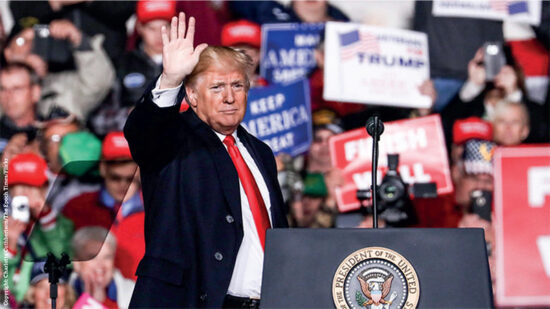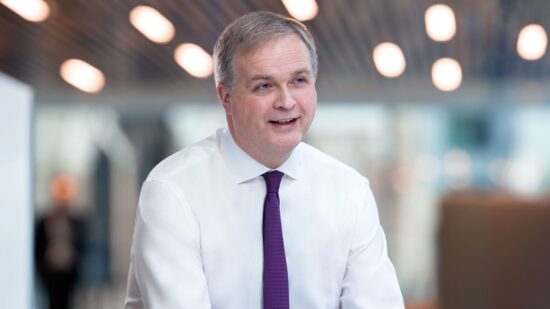During the past few weeks there has been some tempering of investor enthusiasm for the reflation trade. The recent failure of the new US administration to repeal Obama’s healthcare act cast doubt on its ability to implement its election agenda, while promised tax and infrastructure cuts have been slow to emerge. Markets have been trying to find their feet once again after a bullish start to the year.
Pensive moment
For Noel O’Halloran, chief investment officer at KBI Global Investors, it is a necessary moment of reflection. While he remains relatively bullish on the outlook for the global economy, he believes markets got ahead of themselves and neglected some key risks.
He says: “We entered 2017 with a glass half-full view, based on a positive outlook on the US. We saw Trump’s election as fuel for markets rises. We also felt Europe was being mispriced and investors were too sceptical.
“At the same time, the UK was holding up nicely. China had gone off the agenda and was doing quite well. We felt there was a stronger GDP outlook for the world.”
Earnings outlook was particularly encouraging for O’Halloran. Companies were delivering stronger earnings after a “lost year” in 2016. He believes earnings for US corporates may hit 6-7% growth in 2017, while Europe and emerging markets see double-digit rises. This would be the first year of earnings growth for emerging markets in six years.
This earnings momentum is being driven by better economic growth. O’Halloran says: “We are beginning to see the effects of good cost-cutting and self-help. In particular, we are witnessing a rebound in earnings for some sectors that were beaten up: materials, industrials, energy, financials.
“This is where earnings momentum has been, rather than consumer and defensive stocks, which could see a slow-down as currency effects come through.”
He saw considerable mispricing within markets in mid-2016, with investors still seeking out safe havens despite the improving environment. Those sectors seen as ‘defensive’ had been bid higher, to valuation levels not seen for some time.
On the other end, value-oriented sectors looked excessively cheap. This has started to reverse but has further to go in O’Halloran’s view, and his portfolios remain focused on these more cyclical areas.
However, while he still holds this bullish outlook, it has been tempered by the “staggering” returns from stock markets since the start of the year. He points to emerging markets in particular, which are up by 10% over two months, in spite of the issues around China and the protectionist instincts of the new US government.
He also believes markets may be underestimating the risks. These are predominately political risks. O’Halloran says: “The risks from Trump are all to the downside rather than the upside. We believe he probably only has a 65% chance of getting his tax and infrastructure package through in its current form. The probability is that it happens but it is slower than people expect.
“The bigger risk is foreign and trade policy. It is a binary risk and difficult to plan for from an asset allocation point of view. If Trump becomes more focused on trade, on China or Germany, for example, it would be a significant negative for equity markets.
“This is something we are watching and it tempers our bullishness.”
Perfectly balanced
Low interest rates and quantitative easing have been the backbone of this rally, says O’Halloran, and the reversal may not be helpful for markets, creating volatility.
There is also the looming issue of higher interest rates. From the second half of this year, he believes markets will start to look forward to higher rates in 2018 and beyond.
This has resulted in O’Halloran taking a few per cent out of his overweight equity positioning, moving to a modestly overweight position. Much of this has come from a reduction in the group’s overweight position in the US to neutral. He believes the US is now “priced for perfection”.
He has also reduced the group’s overweight position in emerging markets, though it remains its largest. Elsewhere, he has put some money back into “unloved and underappreciated” Europe. He says: “Japan is a nice ballast in portfolio. It is somewhat immune from macro events globally and, from a bottom-up perspective, our global equity team see some companies paying strong dividends with good dividend growth.”
O’Halloran remains significantly underweight in bonds. “We just see no reason to buy them, particularly government bonds in this environment. The only area we hold in fixed income is a short-dated US corporate debt fund, where we like the yield.
“It also gives some protection from a duration perspective and some exposure to USD. We are not significantly bullish, not as bullish as the market, but we think it will be OK.”
He believes government bonds remain a long way from fair value. He says that notionally the value of a government bond should be GDP plus inflation.
In the US, nominal growth is around 2.25% with inflation of 2%, giving a level of 4.25% for the 10-year treasury before they start to look good value again. UK gilts would need to hit similar levels. The only environment in which this might start to look good value once again is if the global economy starts to reverse.








